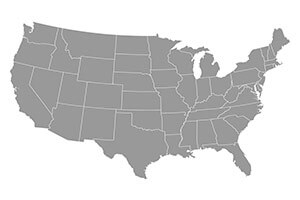
United States
Earlier spring bee foraging and buildup in parts of the Northeast, Mideast and Southeast was at times sporadic due to erratic and often stormy weather. However, later spring and early summer weather improved and the added moisture may help later honey flows. Spring weather in the Southwest was also rainy, but beekeepers were hoping that the extra moisture will help later flows. Colonies in the East Central and West Central areas came out winter generally stronger than normal. In addition, migratory colonies brought back to these areas also look strong. As a result, beekeepers are hoping that their colonies will be better able to take advantage of spring and summer honey flows and make better honey crops. Moisture conditions have been fair to good. On the other hand, lack of moisture could again be a major factor in honey flows in both the Intermountain and Western areas.
Very little new crop honey had been sold yet as this was written. However, both retail and small-lot wholesale trading and prices are expected to remain strong while larger-lot sales continue to compete with cheaper foreign honey. The trend continues for commercial beekeepers to put more reliance on commercial pollination for the main part of their income due to declining honey crops and an unreliable wholesale honey market.
NORTHEAST
Colonies were gathering significant amounts of nectar and pollen from wildflowers, mustard, black locust, honeysuckle, raspberry, blackberry, horse chestnut and sumac as weather conditions permitted. Tulip poplar and early clovers were also producing nectar in some locations. Cool, rainy conditions at times made spring beekeeping difficult. Later this summer more clover, alfalfa, basswood, persimmon and buckwheat should be available for beekeepers to make surplus honey crops. Packaged bees, nucs and divides are building up well now, but will not make much in the way of surplus honey this season unless they were started on drawn comb.
MIDEAST
Earlier spring weather was at times erratic with periods of cool, dry conditions. However, later spring and early summer weather brought too many days of rain to several states hurting potentially bumper honey crops from black locust and tulip poplar. The first part of the white Dutch clover flow was also adversely affected by the rainy weather. On the other hand, some beekeepers were still able to salvage one or two surplus honey supers from these important spring nectar flows. Beekeepers said colonies were also working assorted berries, bush honeysuckle, persimmon, thistle, sumac, thistle, holly and assorted wildflowers. Beekeepers were also hoping for later white Dutch clover, sweet clover, buckwheat, basswood and sourwood flows as the season progresses. Bees are building up well and in some cases beekeepers said they had a heavy swarming season earlier this spring. Demand for new crop honey is strong and beekeepers anticipate having no trouble selling their new crop honey. Most stores have been sold out of last year’s crop for quite a while now.
SOUTHEAST
Beekeepers in this area also complained about too many rainy, unsettled days hurting honey flows in their states. Earlier the orange and tupelo flows in Florida ended with rather poor yields. Later palmetto and gallberry flows were spotty with some beekeepers reporting fair yields while others were disappointed. Bees in both Florida and Georgia were also working flows from tupelo, ti ti, tulip-poplar, as well as assorted berries and wildflowers. In Mississippi and Alabama colonies produced surplus honey from privet hedge, tulip-poplar, basswood, assorted wildflowers and clover. Along the Gulf Coast beekeepers are also hoping for good Chinese tallow flows. Most beekeepers seem confident that they will be able to sell their new crop honey for a good price in smaller lots. However, larger beekeepers are still having to compete with larger lots of foreign honey being purchased by the larger packers. Retail sales of locally produced honey remain strong.
SOUTHWEST—Excessive rains were also a problem in this area earlier in the spring, but beekeepers were also hoping that once the weather settled that the extra moisture would mean longer and more intense honey flows. Beekeepers mentioned earlier flows from canola, wildflowers and vetch. These flows were at times intense, but when rains returned they shut down quickly. Excessive swarming was also brought on at times by the combination of intense flows broken by periods of rainy weather. Beekeepers mentioned nice spring flows from…


